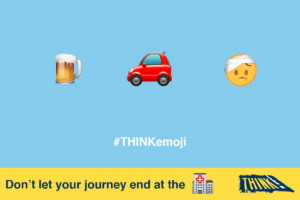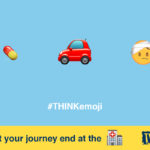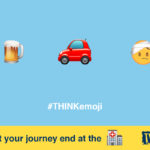We created a series of social assets which used emojis to raises awareness of the dangers of drink driving, drug driving, not wearing a seat belt and using a mobile phone when driving. These were posted organically across THINK! social channels


We created a series of social assets which used emojis to raises awareness of the dangers of drink driving, drug driving, not wearing a seat belt and using a mobile phone when driving. These were posted organically across THINK! social channels




The facts
The law
Read more
In 2015, the drug driving law changed to make it easier for the police to catch and convict drug drivers.
The penalties for drug driving are the same as for drink driving. If you are convicted you could face:
The maximum penalty for causing death by careless driving when under the influence of drugs or drink is life in prison, with a minimum driving ban of five years.
The consequences of a drug drive conviction are far reaching and can include:
There are strict alcohol limits for UK drivers:
In England, Wales and Northern Ireland, the legal alcohol limit for drivers is:
In Scotland (from 5 December 2014), the legal alcohol limit for drivers is lower at:
There are strict penalties if you are convicted of drink driving, including:
The maximum penalty for causing death by careless driving when under the influence of drink or drugs is 14 years in prison, with a minimum driving ban of two years.
In addition to these penalties are the everyday consequences of being caught drink driving which can include: